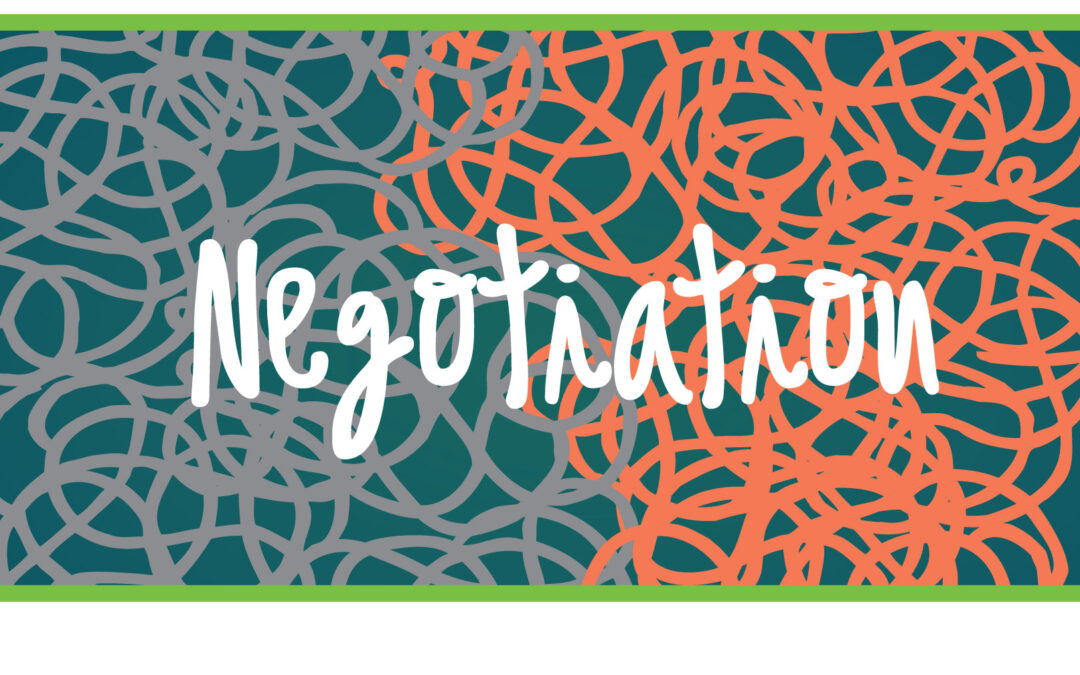Even before the COVID-19 pandemic, we were seeing a shift to more business being conducted virtually. Difficult communications such as negotiations have not been spared from this shift.
Negotiation can be part of a change in your work responsibilities or an agreement about roles on a project. Many exchanges that are viewed simply as conversations are really negotiations waiting to happen. Failing to frame these as negotiations can put you at a disadvantage.
For virtual negotiations of all sorts, we want to pay particular attention to the following elements:
- Open with pleasantries that establish rapport. In a virtual environment, we may find ourselves getting “straight to business” rather than exchanging casual pleasantries that are more typical of in-person meetings. Don’t skip this crucial step, which helps create connection and goodwill! (Employ this for email negotiations as well.)
- Use the webcam to your advantage. Body language and positioning are important to any communication, and particularly to negotiations. Head-only shots stifle our ability to create trust and warmth with the audience. Adjust your webcam so that your head and shoulders are showing. You should be about an arm’s length from your camera.
Negotiations contain both competitive and cooperative elements. Many people are actually too accommodating. It can certainly seem more comfortable to accept what the other person wants – whether it is your manager, team member, or client. But the best solutions for everyone are often found through effective negotiation.
Whether your negotiation is virtual or in-person, these strategies will help you achieve win-win results:
- Ask questions. Studies have shown that successful negotiators are great questioners. They ask open-ended questions that get the other person talking. This reveals the priorities of the other person so that you can propose solutions that meet their needs (and yours).
- Strike a balance between listening and making your case. Effective negotiators are assertive, but also collaborative. Listening allows you to understand the needs, interests, and values of the other side.
- Know what you bring to the table. Strong negotiators understand clearly how to position their product, idea, or service. Once you understand what is important to the other party, you can frame your message to show value, based on their priorities.
Like all skillsets, negotiation skills (whether virtual or in-person) can be developed over time. Practice your skills by considering each conversation as a possible negotiation and using the tips above. You’ll soon find yourself having more productive conversations that leave all involved with more of what they want.
If you’d like to see your team improve their negotiation skills, take a look at BRODY’s Win-Win Negotiations training outline or contact us for more information.
